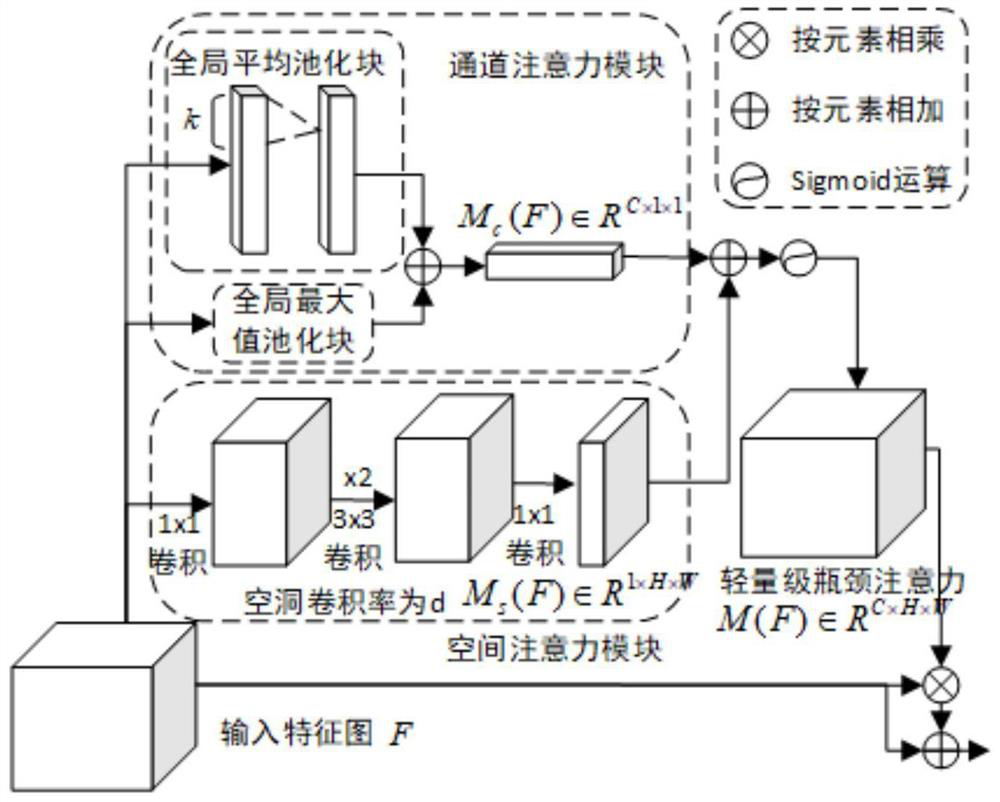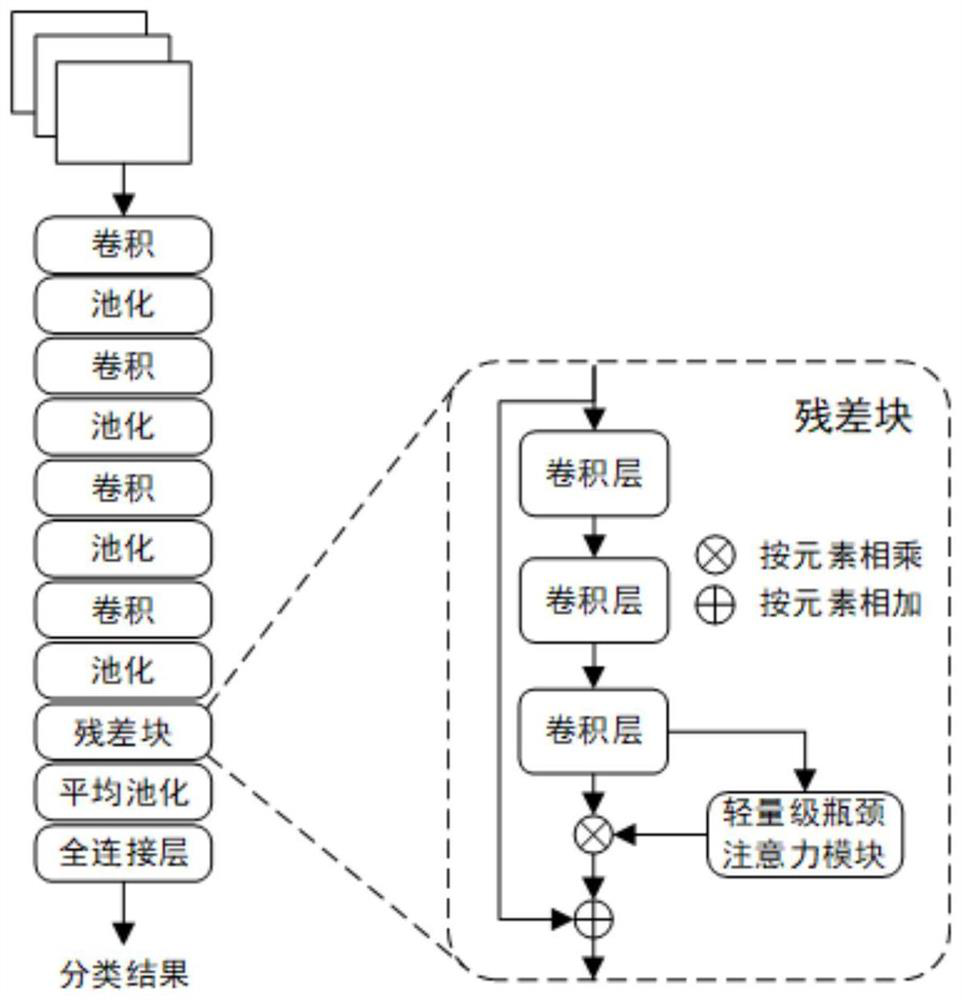Deep learning method for lightweight bottleneck attention mechanism
A technology of deep learning and attention, applied in neural learning methods, neural architecture, biological neural network models, etc., can solve problems such as increasing model overhead and reducing attention mechanism
- Summary
- Abstract
- Description
- Claims
- Application Information
AI Technical Summary
Problems solved by technology
Method used
Image
Examples
Embodiment 1
[0031] In this embodiment, real blood cell data sets from various organs are used, and the data sets include three categories: white blood cells, red blood cells, and platelets. The blood cell data set has a total of 5000 images.
[0032] The deep learning method of the lightweight bottleneck attention mechanism includes the following steps:
[0033] T1. Processing the data set: Firstly, data segmentation is performed on the data set, and the data set is divided into a training set of 4000 samples and a test set of 1000 samples.
[0034] T2. Construct a convolutional neural network neural network embedded with a lightweight bottleneck attention mechanism. The structure diagram is as follows figure 2 , the specific structure is as follows:
[0035] Enter an image of size 128x128x3 into figure 2 Network, the network structure includes: 4 layers of convolution layer, 4 layers of maximum pooling layer, 1 layer of residual unit layer, 1 layer of average pooling layer and 1 lay...
Embodiment 2
[0047] This embodiment is based on a real cat and dog data set, which contains two categories: cats and dogs. The cat and dog dataset has a total of 3680 images.
[0048] The deep learning method of the lightweight bottleneck attention mechanism includes the following steps:
[0049] T1. Processing the data set: Firstly, data segmentation is performed on the data set, and the data set is divided into a training set of 3000 samples and a test set of 680 samples.
[0050] T2. Construct a VGG network embedded with a lightweight bottleneck attention mechanism. The structure diagram is as follows image 3 , the specific structure is as follows:
[0051] T21, the model input is an image of 224×224×3;
[0052] T22. Enter the first convolution layer, the size of the convolution kernel is 3×3, the step size is 1, and the number is 64, and the output feature map of 224×224×64 is obtained;
[0053] T23. Enter the first pooling layer, the size of the pooling filter is 2×2, and the ste...
PUM
 Login to View More
Login to View More Abstract
Description
Claims
Application Information
 Login to View More
Login to View More - R&D
- Intellectual Property
- Life Sciences
- Materials
- Tech Scout
- Unparalleled Data Quality
- Higher Quality Content
- 60% Fewer Hallucinations
Browse by: Latest US Patents, China's latest patents, Technical Efficacy Thesaurus, Application Domain, Technology Topic, Popular Technical Reports.
© 2025 PatSnap. All rights reserved.Legal|Privacy policy|Modern Slavery Act Transparency Statement|Sitemap|About US| Contact US: help@patsnap.com



